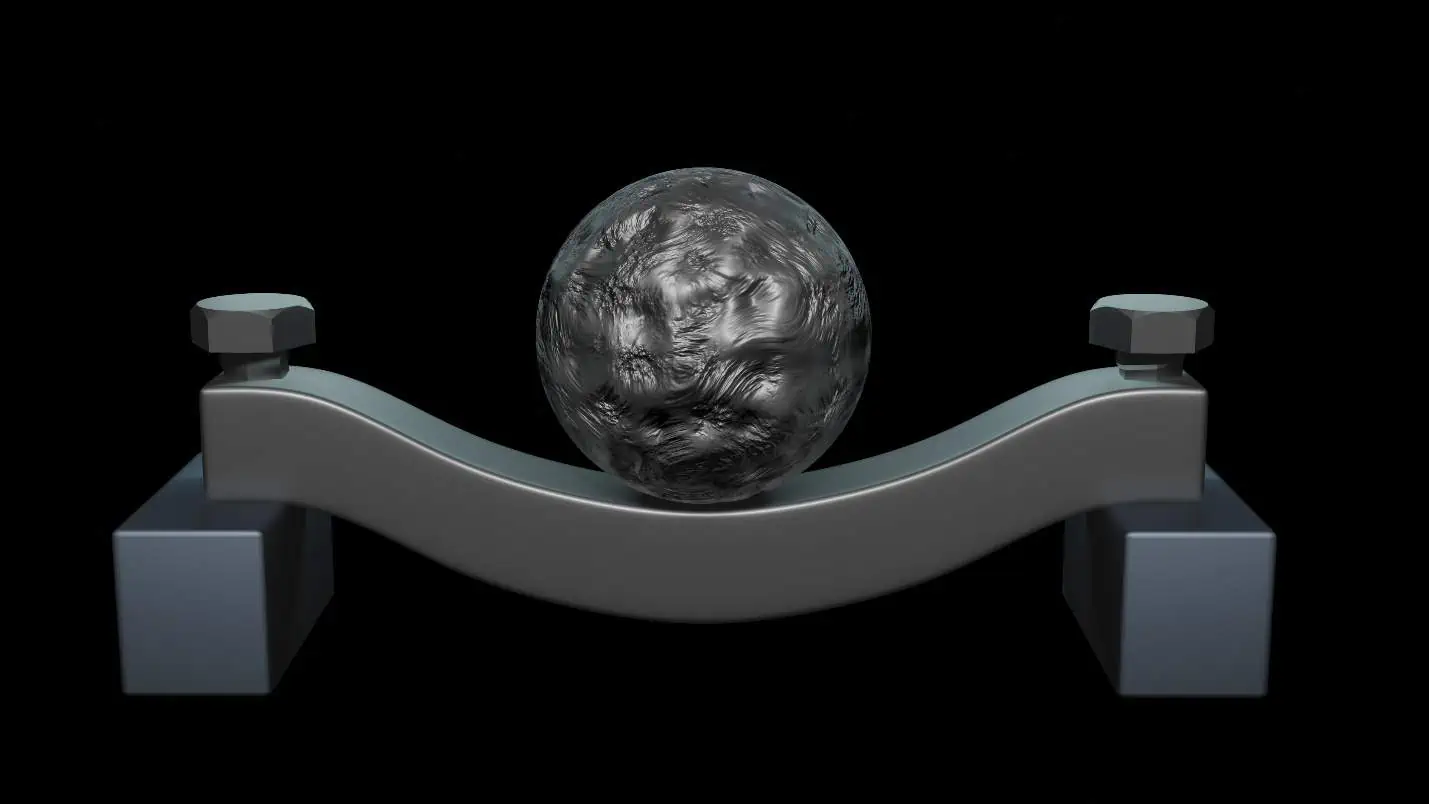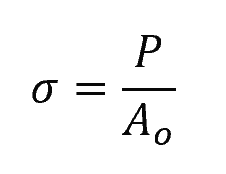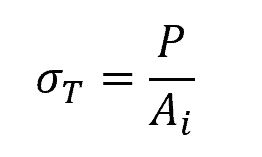In engineering, true stress is a measure of the force applied to a material per unit of its actual cross-sectional area, accounting for deformation. It takes into consideration the change in the material’s cross-sectional area as it undergoes strain, providing a more accurate representation of its mechanical behavior under load.

In this article, we will cover the calculation of true stress, the difference between true stress and engineering stress, and the practical applications of true stress in engineering design.
What is True Stress
In engineering, stress is a fundamental concept describing the internal forces within a material. It is quantified as the force applied perpendicular to the cross-sectional area, where the area is the surface the force acts upon.
The simplest way to calculate stress is by assuming that the stress is constant over the cross section and that the cross-sectional area of the material remains constant, even when it undergoes deformation. This is known as conventional stress, also referred to as engineering stress, and can be calculated using the formula:

Elevate Your Engineering With Excel
Advance in Excel with engineering-focused training that equips you with the skills to streamline projects and accelerate your career.

Where:
- σ = engineering stress [Pa]
- P = applied force on the material [N]
- Ao = original cross-sectional area before any deformation [m2]
However, in reality, as the material deforms, the cross-sectional area changes. Under tension, the cross-sectional area decreases as the material elongates, and under compression, the area increases as the material is compressed. As a result, the actual stress in tension is greater than the engineering stress, while in compression, it is lower than the engineering stress.
This stress is called the true stress, which takes into account the change in the cross-sectional area as the material undergoes deformation. True stress is defined by the following relationship:

Where:
- σT = true stress [Pa]
- Ai = instantaneous cross-sectional area during deformation [m2]
True stress is an accurate reflection of the stress state at any given point in the deformation process.
True Stress vs Engineering Stress Diagram
The difference between true stress and engineering stress in tension and compression is illustrated in the stress-strain diagram below.

When plotted, the true stress-strain curve typically follows the same initial path as the engineering stress-strain curve when the material is undergoing elastic deformation. The differences between the two become apparent as the material enters the strain-hardening range, where the magnitude of strain becomes more significant. Particularly, a significant divergence is observed within the necking region.
For example, a material in tension that supports a decreasing load may appear to have a decreasing stress, as shown in the engineering stress-strain curve in tension above. However, this is not necessarily true if we take into account the true stress experienced by the material. The engineering curve suggests that the load support capability of the material decreases post-yield, but the true stress-strain diagram reveals that the actual stress the material withstands increases due to the decreasing area within the necking region until fracture occurs.
For most engineering applications, designs are based on the material functioning within the elastic range. Hence, the functional strain level is low enough that the difference between the engineering stress and the true stress is marginal. However, it is important to understand the behavior displayed in the true stress-strain diagram for accurate predictions of material response under substantial deformation.
Measurement of True Stress
Measuring true stress involves continuously monitoring the changing area of the material as it experiences force. This process can be complex, as it requires accurate measurement of the material’s dimensions as they evolve during testing.
For example, in a uniaxial tensile test, a specimen is stretched at a constant rate until it fractures. Initially, engineering stress is computed by dividing the applied load by the original cross-sectional area. To convert to true stress, one must account for the necking phenomenon, which can be done by continuously measuring the diminishing cross-sectional area and applying corrections to the force data.
Digital Image Correlation (DIC) systems provide a non-contact method to measure strain distribution and localized deformation on the specimen’s surface, which facilitates the determination of true stress. Additionally, load cells and extensometers, integrated into the testing apparatus, ensure high-precision force and displacement tracking. The data from these instruments feed into software that applies the true stress calculation algorithms, allowing for real-time monitoring and analysis of material behavior throughout the testing phase.
Applications in Engineering
Material Testing and Characterization
True stress-strain curves provide valuable information about the behavior of materials under load, particularly during plastic deformation. For example, true stress-strain curves can be used to predict the onset of necking and failure in materials. Engineers use this data to characterize materials and select appropriate materials for specific applications.
Structural Analysis
In structural engineering, understanding how materials behave under various loads is important designing safe and efficient structures. True stress helps engineers analyze the performance of materials in structures subjected to dynamic or static loads.
In applications where materials are subjected to prolonged loading at elevated temperatures, such as in power generation or aerospace components, understanding creep behavior is essential. True stress is used to analyze creep deformation and predict the long-term performance of materials in such environments.
Metal Forming Processes
Processes such as forging, rolling, and extrusion involve significant plastic deformation. True stress is used to analyze and optimize these manufacturing processes to ensure proper material flow and prevent defects like cracking or tearing.
Finite Element Analysis (FEA)
True stress is often used as input data in numerical simulations like finite element analysis (FEA) to predict the behavior of structures under complex loading conditions. FEA software relies on accurate stress-strain data to provide insights into the structural integrity and performance of components.
